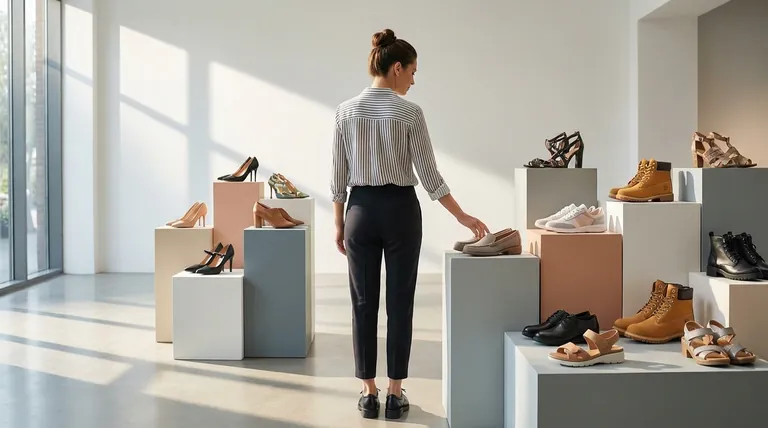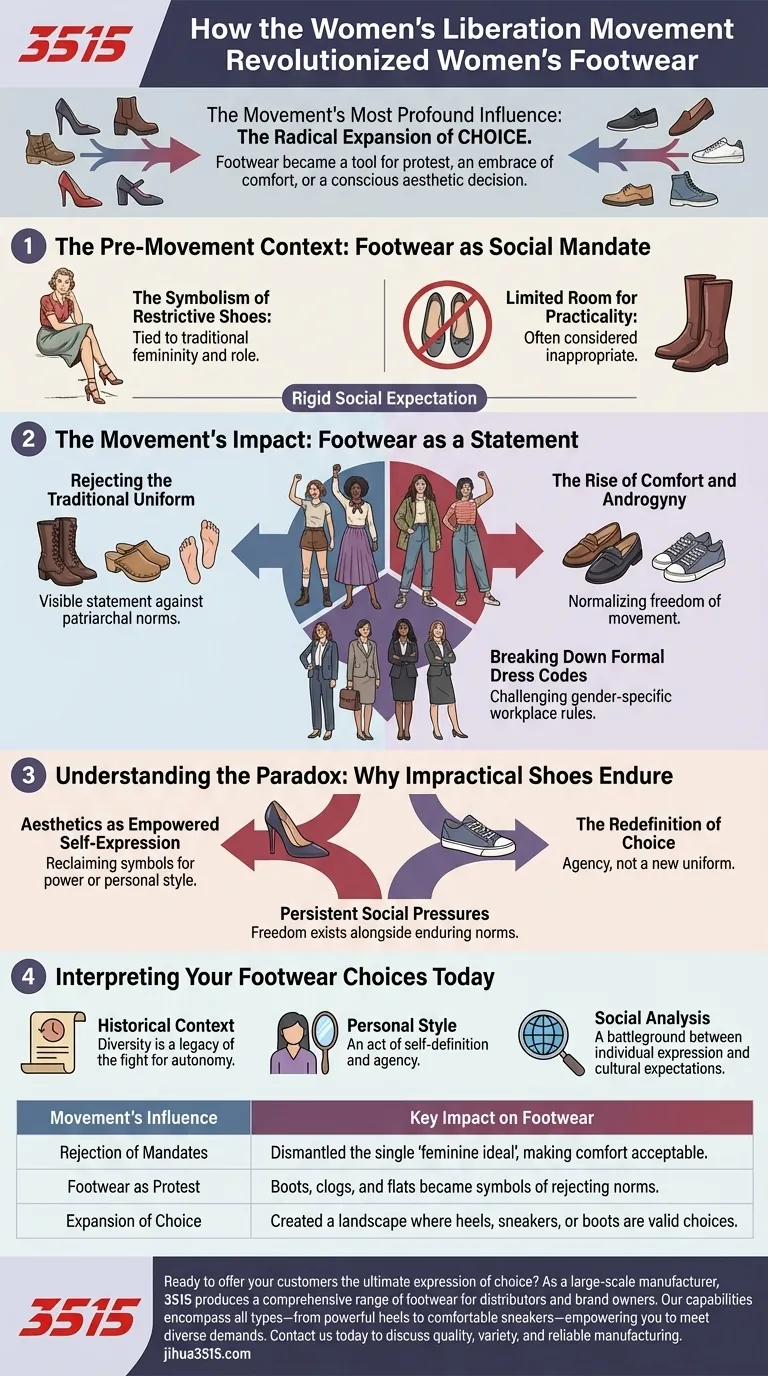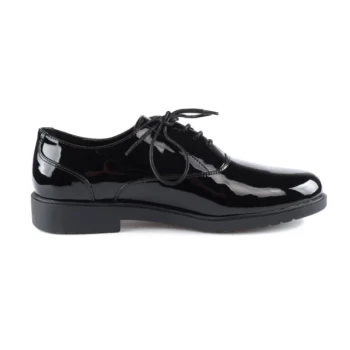Contrary to a simple narrative of replacement, the Women's Liberation Movement did not universally substitute practical shoes for impractical ones. Instead, its most profound influence was the radical expansion of choice. It dismantled the idea of a singular, socially mandated feminine ideal, creating a cultural landscape where footwear could be a tool for protest, an embrace of comfort, or a conscious aesthetic decision.
The core influence of the Women's Liberation Movement on footwear was not the eradication of uncomfortable shoes, but the establishment of personal choice as a form of power. The movement created the space for women to select shoes based on individual preference—whether for practicality, protest, or aesthetic pleasure—rather than rigid social expectation.

The Pre-Movement Context: Footwear as Social Mandate
The Symbolism of Restrictive Shoes
Before the widespread influence of the movement, footwear choices were often limited and deeply symbolic. High heels and other delicate, often uncomfortable styles were tied to traditional concepts of femininity, formality, and even a woman's social and professional role.
Limited Room for Practicality
Comfort-oriented footwear like flats, sandals, or boots was generally seen as informal, and in many professional or social settings, it was considered inappropriate. The expectation to wear "proper" (and often impractical) shoes was a subtle but pervasive part of gendered dress codes.
The Movement's Impact: Footwear as a Statement
Rejecting the Traditional Uniform
A key tenet of the Women's Liberation Movement was the rejection of objects that symbolized female restriction. Just as some women discarded bras, choosing to wear boots, clogs, or even go barefoot became a powerful, visible statement against patriarchal norms and constricting beauty standards.
The Rise of Comfort and Androgyny
The movement championed styles that prioritized freedom of movement and a more natural aesthetic. This helped normalize and popularize footwear like loafers, sneakers, and sturdy boots as acceptable, everyday options for women in a wide variety of contexts.
Breaking Down Formal Dress Codes
The broader fight for equality in the workplace directly challenged gender-specific dress codes. As women entered more diverse professional fields, the demand for practical and comfortable footwear that was still considered professional grew, slowly eroding old standards.
Understanding the Paradox: Why Impractical Shoes Endure
The Redefinition of Choice
The central goal of the movement was to give women agency, not to prescribe a new uniform. The continued popularity of high heels and other uncomfortable shoes is not a failure of the movement, but a complex expression of the choices it helped secure.
Aesthetics as Empowered Self-Expression
For many, choosing to wear a stiletto is a conscious act of reclaiming a symbol and using it for their own purposes—whether to feel powerful, confident, or simply to express a personal aesthetic. The key difference is that this is now one option among many, not a mandate.
Persistent Social Pressures
It is also critical to acknowledge that societal pressures have not disappeared. As noted, many women still choose certain shoes to achieve a specific appearance, often in response to enduring expectations in professional, social, or romantic contexts. The freedom to choose exists alongside these persistent norms.
Interpreting Your Footwear Choices Today
Understanding this history allows you to view modern footwear choices with greater clarity.
- If your primary focus is historical context: Recognize that the sheer diversity of modern footwear is a direct legacy of the movement's fight for personal autonomy and the dismantling of a single beauty standard.
- If your primary focus is personal style: View your shoe choice as an act of self-definition, where both the pursuit of comfort and the embrace of a specific aesthetic are valid expressions of your agency.
- If your primary focus is social analysis: Observe how footwear continues to be a battleground between individual expression and persistent cultural expectations about femininity and power.
The movement's ultimate success is measured not by the specific shoes a woman wears, but by her fundamental freedom to choose them for herself.
Summary Table:
| Movement's Influence | Key Impact on Footwear |
|---|---|
| Rejection of Mandates | Dismantled the single 'feminine ideal', making comfort and practicality acceptable. |
| Footwear as Protest | Boots, clogs, and flats became symbols of rejecting patriarchal norms. |
| Expansion of Choice | Created a landscape where heels, sneakers, or boots are all valid personal choices. |
Ready to offer your customers the ultimate expression of choice?
As a large-scale manufacturer, 3515 produces a comprehensive range of footwear for distributors, brand owners, and bulk clients. Our production capabilities encompass all types of shoes and boots—from powerful heels to comfortable sneakers—empowering you to meet the diverse demands of today's consumers.
Contact us today to discuss how we can support your brand with quality, variety, and reliable manufacturing.
Visual Guide

Related Products
- Wholesale Women's Leather Derby Shoes Custom Factory Production
- Custom Manufactured Air Cushion Leather Business Shoes for Wholesale
- Wholesale Comfortable Business Casual Shoes Custom Manufacturing
- Wholesale Leather Derby Shoes Manufacturer | Customizable Business & Dress Footwear
- Wholesale Patent Oxford Dress Shoes | Custom & Bulk Manufacturing
People Also Ask
- How do luxurious ostrich leather shoes differ from traditional dress shoes? A Guide to Texture & Comfort
- How should leather shoes be stored for long periods? A Complete Guide to Preserving Your Investment
- What are the environmental benefits of choosing real leather shoes? Durability and Waste Reduction
- What are the key features of high-quality leather in shoes? Invest in Durability and a Perfect Fit
- What factors should be considered when choosing between black and brown dress shoes? Master Professional Style & Versatility



















